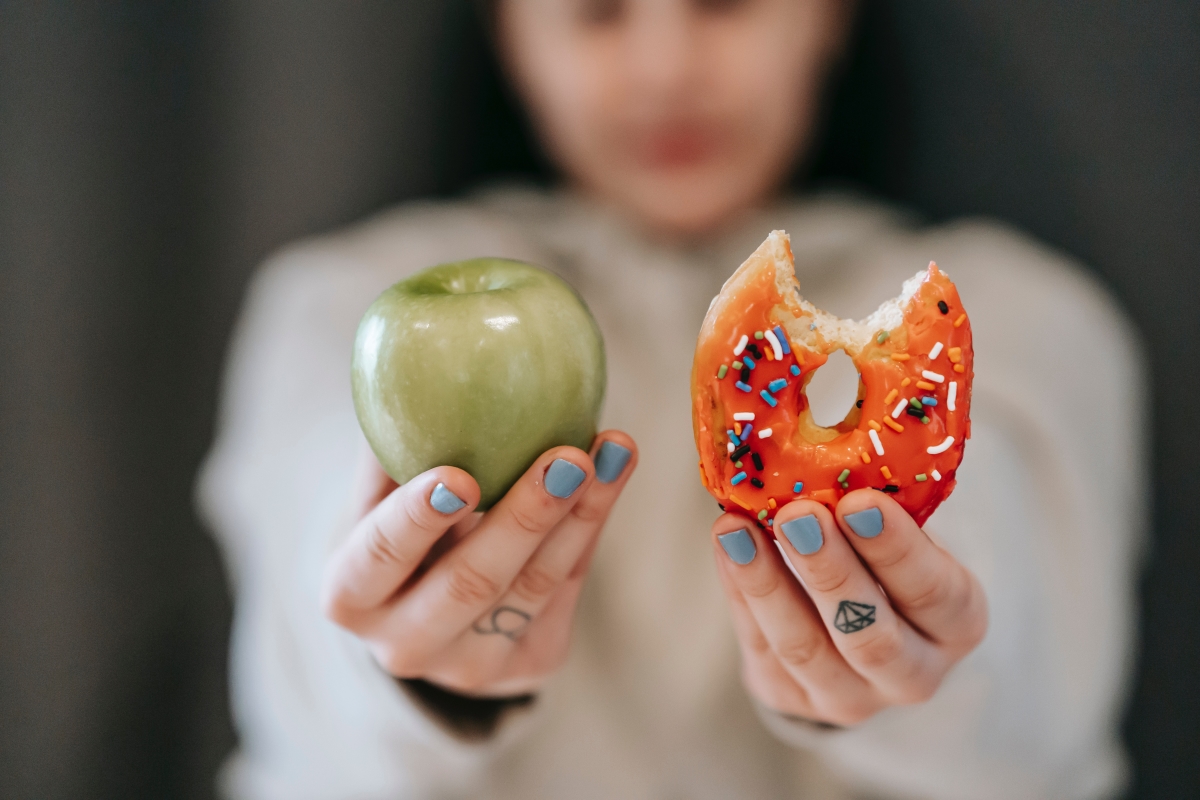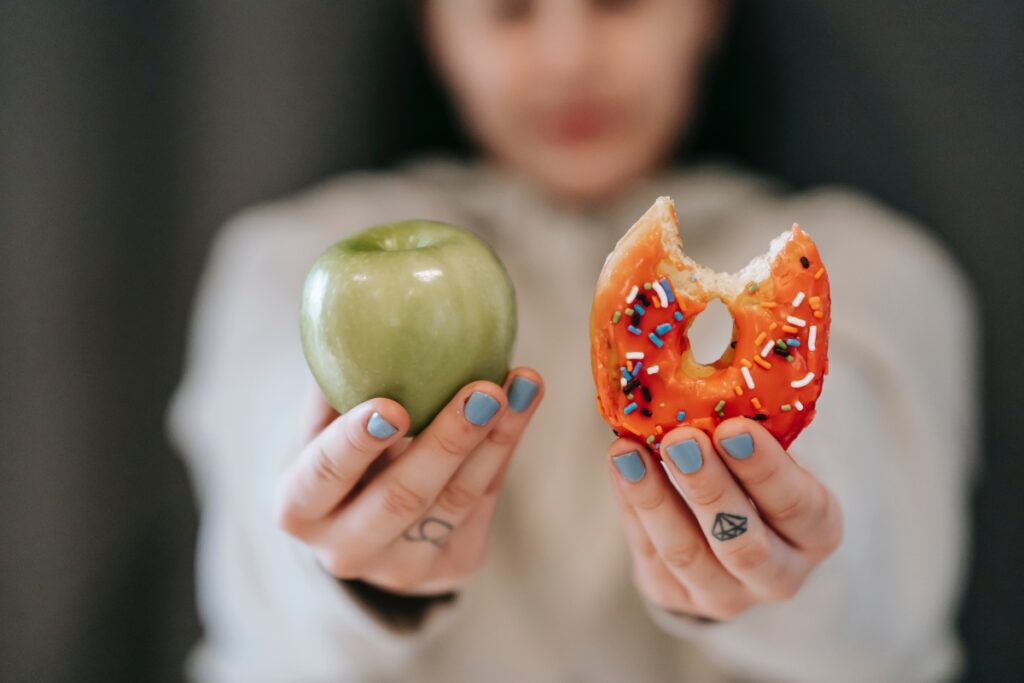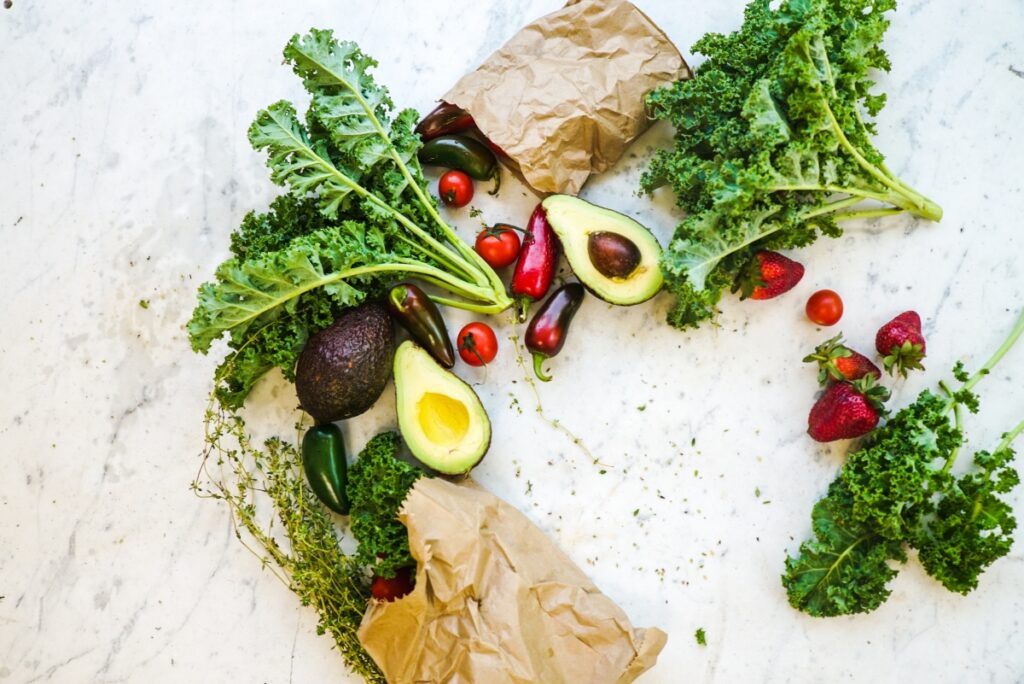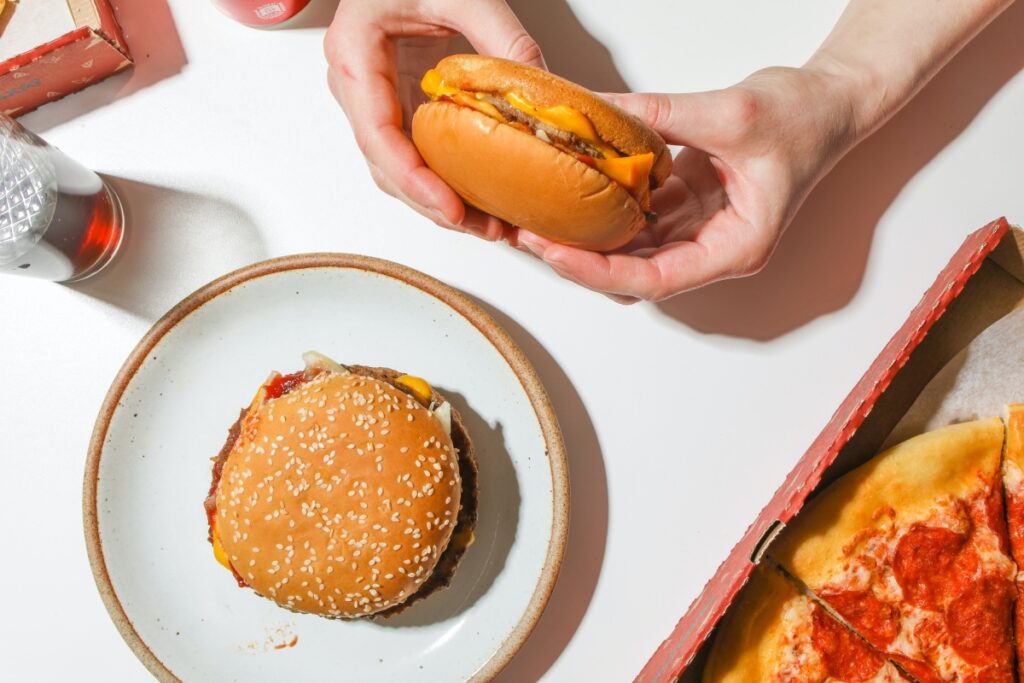
Reset Your Gut In 3 Simple Steps


Reset Your Gut In 3 Simple Steps
When it comes to our health, the gut microbiota (also called gut flora) plays a big role. The gut microbiota includes numerous strains of bacteria, viruses, and fungi.
If you suspect your gut microbiota may be off, consider doing a Gut Reset. In this article, we’ll cover the science behind gut microbiota and Gut Reset.
What is a Gut Reset?

A Gut Reset is when you change your diet, lifestyle, and mindset to improve the gut flora composition.
The Western diet, aka a diet high in sugar and fat, breeds an unhealthy gut flora (dysbiosis). Also, antibiotics can ruin the gut flora.
The shift towards dysbiosis may include any of the three changes in your gut flora:
- Decreased number of beneficial bacteria
- Overgrowth of unhelpful bacteria
- Overall reduced bacterial diversity
Gut dysbiosis can contribute to the development of many diseases, such as obesity and autoimmune diseases.
The good news is that your gut microbial composition can improve within just a few days of improving your diet and lifestyle. A clinical study discovered that the microbiota turnover takes about 2 to 4 days.
In addition to strengthening our gut integrity and immune system, the gut microbiota also protects us from pathogens. These functions depend on the microbial composition and are sensitive to any imbalance/change in bacterial composition or distribution in the gut. Generally, if a gut flora is more diverse and contains more beneficial bacteria, it will be better at inhibiting pathogens than if it has lower diversity and less beneficial strains.
Should you do a gut reset? How to know if your gut flora is off
Digestive problems such as bloating and irregularities
Bloating and irregularities are some of the more common gut problems that may appear less serious. These are clear signs that your gut bacteria are off-balance.
Brain fog
Brain fog consists of symptoms such as lack of focus, forgetfulness, and mental fatigue.
Brain fog means your brain’s mitochondria are struggling to produce enough energy for your brain to function and stay healthy. This frequently occurs as a result of oxidative stress and sensitivity.
The unhealthy microbes in the gut and overall poor gut health can contribute to the inflammation and oxidative stress that cause brain fog.
Weight gain

Your hormones and gut microbes work together to regulate appetite. Both send the brain information that we are hungry. We have a wide range of hormones that determine whether or not we are hungry, such as ghrelin, leptin, and neuropeptide Y. However, your gut microbes also influence your appetite and weight.
Certain alterations in the gut microbiota’s composition in response to high-fat and sugar meals may cause weight gain. High-fat and sugar diets breed microbes linked to obesity. Whereas a diet that is colorful fruits and vegetables and high in fiber breeds lean microbes.
A few ways your gut bacteria can influence your weight:
1. Metabolic endotoxemia (high levels of lipopolysaccharides – LPS – in the blood) seems to increase the hunger hormone while reducing the fullness hormone. LPS is a component of the cell wall of Gram-negative bacteria, which are typically unhealthy bacteria in the gut. Having more Gram-negative bacteria and a leaky gut, such as from high-fat and high-sugar meals, can cause metabolic endotoxemia.
2. Firmicutes are a group of gut bacteria linked to weight gain, possibly by extracting more calories from your gut content. Obese people tend to have more firmicutes compared to people with a healthy weight.
Typically, probiotics alone will typically not transform the gut flora, although they provide health benefits as a visitor to your gut. If your goal is to upgrade your gut flora, it will be important also to improve your diet and make overall healthier lifestyle choices. Studies have shown that gut flora can change over in response to these changes. This is why you should consider a Gut Reset.
How to do a Gut Reset
Eat more fiber
Low-fiber diets can contribute to dysbiosis. Long-term, it’s linked to colorectal cancers and many other inflammatory conditions.
Dietary fibers feed good gut bacteria and improve their growth in the gut. Many plants contain naturally occurring prebiotics, such as:
- Bananas
- Oats,
- Tomatoes
- Onions
- Chicory
- Garlic
- Jerusalem artichokes
- Asparagus
- Soybeans
- Leeks
- Wheat
These fibers also feed good bacteria, such as Faecalibacterium prausnitzii, which have anti-inflammatory properties.
Eat more colorful fruits and vegetables

Polyphenols, the colorful antioxidants in fruits and vegetables, promote the diversity of gut bacteria, making your gut flora more robust. Whereas diets lacking fruits and vegetables have the opposite effect.
Three groups of people were used in a study that aimed to assess the impact of fruit and veg, with specific emphasis on flavonoids. Two groups were told to increase their fruit and veg intake for 6 weeks. The third group, a control, continued their normal diet. When the subjects’ fecal bacterial levels were measured after 6 weeks, fruit and veg intake inhibited the growth of potentially harmful gut bacteria.
In another study, healthy men consumed red wine polyphenols for four weeks, and the growth of good bacteria, such as bifidobacteria, increased.
Polyphenols are found in plant-based foods, such as:
- Fruits
- Vegetables
- Tea
- Coffee
- Red wine
- Dark chocolate
- Cereals like corn, wheat, oats
- Legumes such as beans and lentils
Grapes, apples, pears, cherries, and berries have between 200 to 300 mg of polyphenols per 100 grams (3.55 oz). When enjoying a glass of red wine, a mug of coffee, or a cup of tea, you ingest about 100 mg of polyphenols.
In addition to improving your gut bacteria diversity, antioxidants help mitigate the negative impact of oxidative stress, such as from sun exposure, mental-emotional stress, pollution, and inflammation.
Remove inflammatory foods such as high-saturated fat items and sugar

A diet high in fat and sugar and low in fiber decreases beneficial bacterial diversity in the gut.
Diets high in fat and saturated fatty acids kill good gut bacteria and reduce gut flora diversity. These good bacteria include Akkermansia muciniphila and Lactobacillus, both of which are necessary for a healthy gut.
Sugar disrupts the gut flora in animals, making them more susceptible to colon inflammation. This shows that sugar may contribute to susceptible people’s gut inflammation and abdominal. Limiting a high-sugar diet may help prevent abdominal discomfort and other inflammatory and metabolic diseases.
High-sugar diets contribute to chronic inflammation by reducing bacterial diversity and the number of bacteroidetes while increasing proteobacteria. Bacteroidetes are among the most common bacteria in healthy adult microbiota. Proteobacteria are typically a small component of healthy gut microbiota. If the number of proteobacteria increases, it could lead to inflammation.
For a healthy gut microbiota, you should follow a diet that consists of lots of fruits and vegetables and is low in fat and sugar. Also, use probiotic supplements and regularly consume some fermented dairy products such as yogurt or buttermilk. [R].
Use a “Weed and Reseed” Program
To upgrade your overall microbiome, not only do you need to provide good bacteria with probiotics, but you’ll also need to weed out the harmful bacteria in your gut. Then, you can reseed with the beneficial ones.
Most probiotic supplements do not colonize the gut. Rather, they contain transient bacterial strains that deliver benefits before leaving.
Biome Breakthrough is a fantastic combination of IgYmax and synbiotics (probiotics + prebiotics). IgYmax weeds out bad gut microbes to make room for good ones, while synbiotics help beneficial bacteria survive and thrive.
IgY is powerful in inhibiting unhealthy microbes that live in our gut. Clinical studies showed it could help inhibit and remove these harmful bacteria without causing die-off reactions.
Even though IgY does not kill all pathogens present, it significantly decreases their numbers to the point where our immune system can fight them off by itself.
Synbiotics (probiotics + prebiotics) help good bacteria to survive better in the gut. When the probiotics ferment the prebiotics, they deliver postbiotics that support the gut lining. The LGG chocolate flavor contains collagen and bone broth powder that help support the gut lining. Plus, it’s delicious!
LGG should be an important part of any Gut Reset because it helps to heal the gut, weeds out bad bacteria, and promotes the growth of beneficial ones.
References
- Hills RD Jr, Pontefract BA, Mishcon HR, Black CA, Sutton SC, Theberge CR. Gut microbiome: Profound implications for diet and disease. Nutrients. 2019;11(7):1613.
- Gupta V, Garg R. Probiotics. Indian J Med Microbiol. 2009;27(3):202-209.
- DeGruttola AK, Low D, Mizoguchi A, Mizoguchi E. Current understanding of dysbiosis in disease in human and animal models. Inflamm Bowel Dis. 2016;22(5):1137-1150.
- Aoun A, Darwish F, Hamod N. The influence of the gut microbiome on obesity in adults and the role of probiotics, prebiotics, and synbiotics for weight loss. Prev Nutr Food Sci. 2020;25(2):113-123.
- David LA, Maurice CF, Carmody RN, et al. Diet rapidly and reproducibly alters the human gut microbiome. Nature. 2014;505(7484):559-563.
- Thursby E, Juge N. Introduction to the human gut microbiota. Biochem J. 2017;474(11):1823-1836.
- Foley A, Burgell R, Barrett JS, Gibson PR. Management strategies for abdominal bloating and distension. Gastroenterol Hepatol (N Y). 2014;10(9):561-571.
- Carding S, Verbeke K, Vipond DT, Corfe BM, Owen LJ. Dysbiosis of the gut microbiota in disease. Microb Ecol Health Dis. 2015;26(0):26191.
- Theoharides TC, Stewart JM, Hatziagelaki E, Kolaitis G. Brain “fog,” inflammation and obesity: key aspects of neuropsychiatric disorders improved by luteolin. Front Neurosci. 2015;9:225.
- Kennedy PJ, Cryan JF, Dinan TG, Clarke G. Irritable bowel syndrome: a microbiome-gut-brain axis disorder? World J Gastroenterol. 2014;20(39):14105-14125.
- Ruscio M. How to Get Rid of Brain Fog: Your Action Plan. Drruscio.com. Published March 4, 2021. Accessed September 30, 2021. https://drruscio.com/how-to-get-rid-of-brain-fog/
- Neary NM, Small CJ, Bloom SR. Gut and mind. Gut. 2003;52(7):918-921.
- Ferrarese R, Ceresola ER, Preti A, Canducci F. Probiotics, prebiotics and synbiotics for weight loss and metabolic syndrome in the microbiome era. Eur Rev Med Pharmacol Sci. 2018;22(21):7588-7605.
- Boutagy NE, McMillan RP, Frisard MI, Hulver MW. Metabolic endotoxemia with obesity: Is it real and is it relevant? Biochimie. 2016;124:11-20.
- Mohammad S, Thiemermann C. Role of metabolic endotoxemia in systemic inflammation and potential interventions. Front Immunol. 2020;11:594150.
- Magne F, Gotteland M, Gauthier L, et al. The Firmicutes/Bacteroidetes ratio: A relevant marker of gut dysbiosis in obese patients? Nutrients. 2020;12(5):1474.
- Makki K, Deehan EC, Walter J, Bäckhed F. The impact of dietary fiber on gut Microbiota in host health and disease. Cell Host Microbe. 2018;23(6):705-715.
- Klinder A, Shen Q, Heppel S, Lovegrove JA, Rowland I, Tuohy KM. Impact of increasing fruit and vegetables and flavonoid intake on the human gut microbiota. Food Funct. 2016;7(4):1788-1796.
- Lin D, Peters BA, Friedlander C, et al. Association of dietary fibre intake and gut microbiota in adults. Br J Nutr. 2018;120(9):1014-1022.
- Queipo-Ortuño MI, Boto-Ordóñez M, Murri M, et al. Influence of red wine polyphenols and ethanol on the gut microbiota ecology and biochemical biomarkers. Am J Clin Nutr. 2012;95(6):1323-1334.
- Pandey KB, Rizvi SI. Plant polyphenols as dietary antioxidants in human health and disease. Oxid Med Cell Longev. 2009;2(5):270-278.
- Zhang J, Zhao X, Jiang Y, et al. Antioxidant status and gut microbiota change in an aging mouse model as influenced by exopolysaccharide produced by Lactobacillus plantarum YW11 isolated from Tibetan kefir. J Dairy Sci. 2017;100(8):6025-6041.
- Wolters M, Ahrens J, Romaní-Pérez M, et al. Dietary fat, the gut microbiota, and metabolic health – A systematic review conducted within the MyNewGut project. Clin Nutr. 2019;38(6):2504-2520.
- Singh RK, Chang H-W, Yan D, et al. Influence of diet on the gut microbiome and implications for human health. J Transl Med. 2017;15(1):73.
- Khan S, Waliullah S, Godfrey V, et al. Dietary simple sugars alter microbial ecology in the gut and promote colitis in mice. Sci Transl Med. 2020;12(567):eaay6218.
- Schmidt AM, Hori O, Brett J, Yan SD, Wautier JL, Stern D. Cellular receptors for advanced glycation end products. Implications for induction of oxidant stress and cellular dysfunction in the pathogenesis of vascular lesions. Arterioscler Thromb. 1994;14(10):1521-1528.
- Satokari R. High intake of sugar and the balance between pro- and anti-inflammatory gut bacteria. Nutrients. 2020;12(5):1348.
- Zhang M, Yang X-J. Effects of a high fat diet on intestinal microbiota and gastrointestinal diseases. World J Gastroenterol. 2016;22(40):8905-8909.
- Rahman S, Van Nguyen S, Icatlo FC Jr, Umeda K, Kodama Y. Oral passive IgY-based immunotherapeutics: a novel solution for prevention and treatment of alimentary tract diseases: A novel solution for prevention and treatment of alimentary tract diseases. Hum Vaccin Immunother. 2013;9(5):1039-1048.
- Kolida S, Gibson GR. Synbiotics in health and disease. Annu Rev Food Sci Technol. 2011;2(1):373-393.
- Żółkiewicz J, Marzec A, Ruszczyński M, Feleszko W. Postbiotics-A step beyond pre- and probiotics. Nutrients. 2020;12(8):2189.
- Song W, Chen Q, Wang Y, Han Y, Zhang H, Li B. Identification and structure-activity relationship of intestinal epithelial barrier function protective collagen peptides from Alaska Pollock skin. Mar Drugs. 2019;17(8):450.
- Chen Q, Chen O, Martins IM, et al. Collagen peptides ameliorate intestinal epithelial barrier dysfunction in immunostimulatory Caco-2 cell monolayers via enhancing tight junctions. Food Funct. 2017;8(3):1144-1151.
1 Comments
Leave a Comment
You must be logged in to post a comment.

I’d incessantly want to be update on new articles on this internet site, bookmarked! .